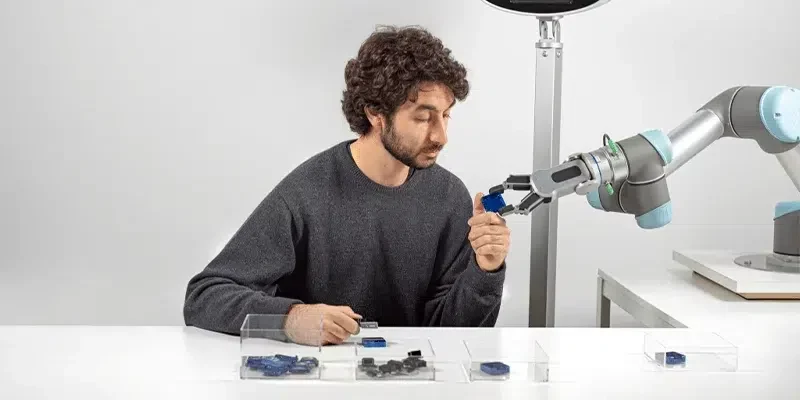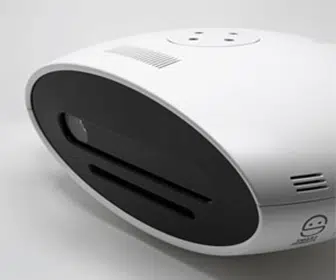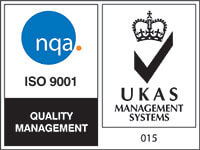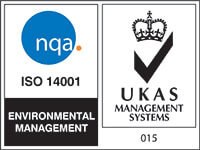Artificial intelligence at the operator’s service
Smart Robots is a spin-off from the polytechnique school of Milan in Italy, founded in 2016 within the e-Novia group’s business support division in relation to start-ups. Smart Robots helps its clients to reduce the margin of error attributable to human operators in the assembly and packing phases of production. It is essentially aimed at automobile and electrical appliance manufacturers. The Smart Robots vision system offers two areas of application: quality control and human-robot collaboration.
In quality control, the three-dimensional vision system uses artificial intelligence to acquire images from the work station in real time. If necessary, it recognises and instantly corrects the operator’s actions.
In the second area of application, i.e., when it is connected to a collaborative robot (cobot), Smart Robots guarantees a perfect human-machine interaction, by adapting and synchronising the movements of the cobot with the actions of the human operator.
The Smart Robots project
Smart Robots’ engineers contacted ARRK following a recommendation from a long-standing client. “Once our 3D designs were complete, we wanted to be able to visualise our robot more realistically. Before starting mass production, we used additive manufacturing to validate the aesthetic aspect of our vision system.It may come as a surprise, but aesthetic criteria are very important in the industrial world of today. Equipment must be designed and reflect an image of quality, performance and reliability” stated Roberto Rossi, co-founder of Smart Robots.
Andrea, Project Manager at ARRK explains: “The client entrusted the construction of the head of the product to us, comprising 4 parts: upper and lower covers, and front and back face. As this project involved a strong aesthetic factor, I immediately recommended SLA (stereolithography) technology because it allows good surface finish with good value for money. With SLA, a few finishing operations (primer, sanding, final painting) are generally sufficient to obtain good results. With regards the colour of the covers, the client simply wanted pure white. Thanks to the expertise of our production team, we were able to take on this challenge! “
Developing a steady supply of low volume production parts
Our Project Manager continued: “As it fell within the budget, and since the SLA model we had produced had been very successful, we decided to use it as the master main part to produce the silicone mould.“
Since then, ARRK has been producing low volume batches of between 15 to 20 parts, several times a year, as this new line developed. Its activity, like that of ARRK, did not decrease during the Covid-19 crisis and we have fullfilled every order. We know we have a good working relationship with Smart Robots because they have recommended ARRK’s services to one of its partners.





